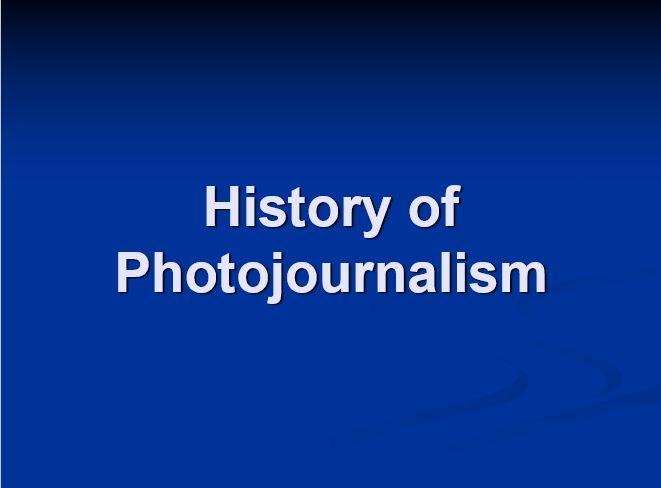History of Photojournalism- Photojournalism History and Timeline
History of Photojournalism- Photojournalism History Since the 1980s. The history of photojournalism has been discussed here from the 1800s to the 2000s. Also the timeline of the History of Photojournalism.
In the beginning
- In the mid-1800s, the average person was not used to seeing a photographic portrait, much fewer images from the battlefront.
- Photojournalism began when people began to document the Civil War by lugging, on horseback, cameras that weighed many pounds.
Halftone process — 1870
- The image turned into dots (a pattern of black and white dots) that simulate shades of gray.
- It allowed for realistic-looking photographs rather than an artist’s wood etching.
- Inaugurated an era of photojournalism and these visual surrogates of reality became an integral aspect of campaigns for social reform.
News Values

The timeline of the History of Photojournalism
- 1839: Optical and chemical principles combined to allow the creation of camera obscura, the first “camera” (actually the result of inventions that go back as far as the fifth century B.C.).
- 1871: Canadian Illustrated News prints the first halftone in a magazine.
- 1877: First illustrated daily newspaper, The Daily Graphic.
- 1880: The Daily Graphic publishes the first halftone in the American daily newspaper.
- 1900: Frances Benjamin Johnston and Jessie Tarbox Beals, who followed shortly after Johnston, become the first female photojournalists.
- 1903: Graflex camera introduced in the U.S.; a single-lens reflex camera; it used roll film; National Geographic magazine, started in 1888, runs its first halftone.
- 1910: Speed Graphic introduced; a 4×5 camera, it had interchangeable lenses and two shutters.
- 1923: First photograph transmitted by wire.
- 1924: “Composograph,” first staged and faked news photo, born by combining elements from different photos; first Leica cameras using 35mm motion picture film and extremely fast (f/1.8 or so) lenses.
- 1925: Flashbulb invented in Germany.
- 1929: Speed Graphic replaces Graflex as primary camera of U.S. newspapers.
- 1935: Associated Press establishes wire photo network.
- 1936: Life magazine publishes the first issue.
- 1937: Kodachrome colour film becomes available for 35mm still camera; revolutionizes colour photography.
- 1941: Portable electronic flash becomes practical.
- 1942: Kodacolor colour negative film introduced.
- 1947: the Polaroid camera was invented.
- 1954: Tri-X black-and-white film marketed by Kodak.
- 1960: 35mm cameras becoming standard for photojournalists.
- 1978: AP introduces electronic darkroom.
- 1982: Digital still camera becomes available.
- 1987: Auto and self-focusing cameras standard.
- 1988: Kodak introduces ISO 3200 film.
- 1995: Color negative film the standard for newspapers.
- 1998: Digital still cameras widespread; high-resolution cameras (5 megapixels) retail for about $5,000.



